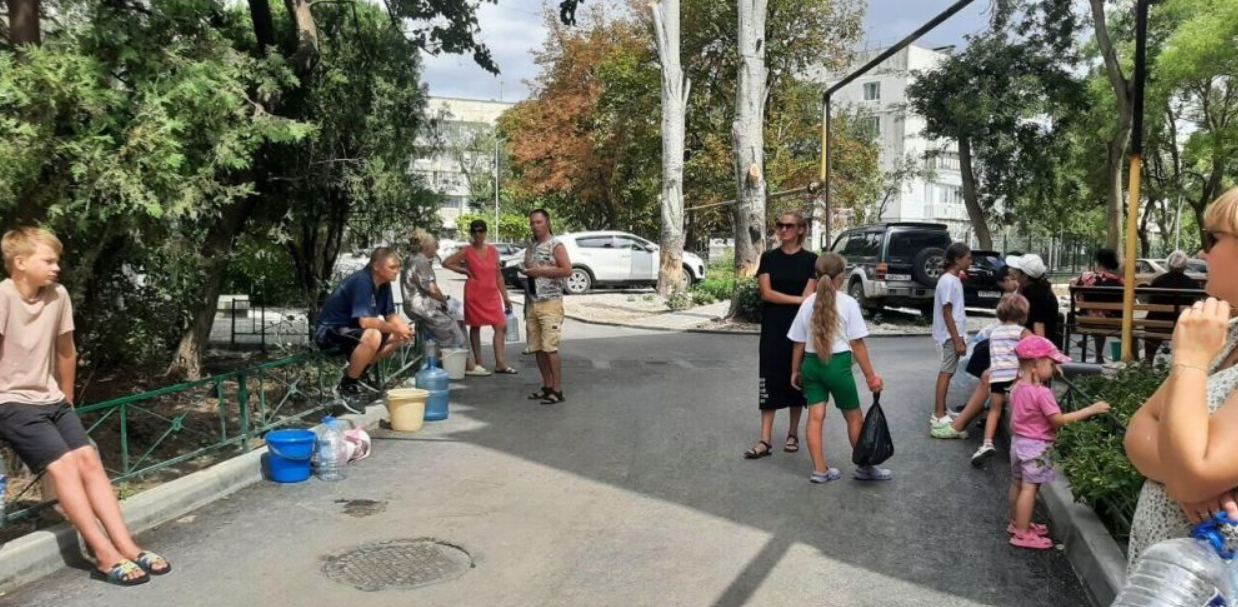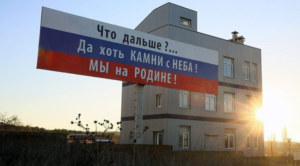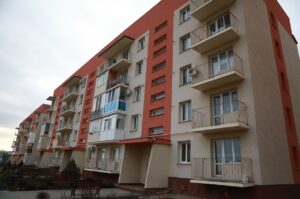Crimea has experienced problems with water supply during all ten years of Russian occupation. North Crimean Canal, the main line of water supply, has satisfied Crimean needs by waters of Dnieper River by 85%. After the Russian occupation of Crimea in 2014, the Canal was closed. In 2023, Russian occupants exploded a dam of Kakhovka Hydro Power Plant and re-launch of the Canal failed. Now occupants try to solve the problem of water scarcity by all possible means. So far, their efforts are unsuccessful.
Under the support of construction troops of the Russian Armed Forces, occupation authorities of Crimea and Sevastopol drill wells, change riverbeds to fill in reservoirs, search underground waters of Azov and develop projects of seawater desalination.
However, they fail to provide uninterrupted water supply and its quality as the number of water consumers keeps growing. Number of Russian citizens, who came to occupied peninsula, and Russian troops increased not less than by one million people.
News about accidents on networks of water supply in various areas of Crimea appears almost every week. Today several villages near Simferopol are left without water. On August 5, 2024, accident on water pipeline disrupted water supply for 50 streets of resort Feodosia. Next day over 1,5 thousand consumers did not have water supply in Kerch. In June 2024, villages of Greater Yalta suffered from the absence of water caused by accident on sewage system. Sea water was polluted and beaches were closed along 30 kilometers of sea shore. In July 2024, five raions of Crimea also did not have water supply. In May 2024, inhabitants of Yevpatoria have not had water supply for one week.
Water reserves in Crimean reservoirs have been significantly reduced. According to the data of Russian occupation government, in June 2024, their volume fell down by 17 million cubic meters, in July – by 16 million. Now overall water reserves amount to 142 million cubic meters. Last year they reached 185 million cubic meters.
The situation is worsened by extreme heat and absence of rains. Experts forecast water shortage in coming years. Water reserves have fallen below average volume of Crimean reservoirs (183 million cubic meters).
Bilohirsk and Taigan reservoirs are almost empty. Their water was transferred to Biuk-Karasu River, in order to fill in part of North Crimean Canal, supplying water to South Eastern Crimea.
Before the Russian occupation, Biuk-Karasu River originated in Crimean Mountains and flew into Sivash. Russian occupants changed its flow in the opposite direction and directed to the Canal.
Tanasu River, main tributary of Biuk-Karasy, dried out. Alma River is empty. It flew into Partizan Reservoir.
«We will enough water in Crimea for 2,5 years. Today Simferopol almost does not take water from reservoir. We receive 120 thousand cubic meters from underground waters», as reported Russian «Head of Crimea» Aksyonov.
Pumping underground waters has exhausted their reserves. Underground sources dry out. As an outcome, there is a growing salinization and degradation of soils.
Crimean farmers have experienced growing difficulties. Before the Russian occupation in 2014, Crimean agriculture has almost entirely depended upon the water from Dnieper River, supplied by North Crimean Canal. The Russian occupation of Kakhovka Hydro Power Station in 2022 secured water supply by the Canal for short time. Aksyonov declared that occupation authorities rejected plans to build desalination plant. It was supposed to take water from Azov Sea. As he argued, the re-launch of North Crimean Canal would solve the problem of water shortage. However, as an outcome of the explosion of Kakhovka Hydro Power Plant, the Canal dried out.
«Thanks to our Armed Forces, we received water and planted rice on our lands. But the destruction of a dam of Kakhovka Power Plant caused crop failure. This year we planted sunflower on those lands», as told director of LLC «Dniprovsky» Sergii Romanchenko.
Local collaborators have still hoped to re-launch the North Crimean Canal. Konstantynov, the «speaker» of Russian occupation «parliament of Crimea», proposed to fill in the Canal with pumps.
«There will be water in Crimea without any doubts. We will get it through North Crimean Canal – thanks to pumps or to natural flow. Viable strategy can be developed after the completion of special military operation», as told Konstantynov in spring this year.
The water supply is the main headache of Crimean collaborators. Now they plan to build two new reservoirs on Crimean peninsula.
«Martovske reservoir will be situated in Bakhchysarai raion and will supply water to Great Yalta. Sonyachnogirske reservoir will be built to provide water for Alushta. Part of working Lozovsky quarry will be used for the supply of Simferopol and neighboring territories. Engineering works will take around one year and a half», as said Roman Zakharov, speaker of «Head» of Crimean State Committee on Water Resources.
Growing construction in occupied Crimea, its militarization and overpopulation require more reserves of water resources. Overload of old sewage system poses epidemiological risks and threats.
Cholera outbreaks were registered in three Crimean cities, as reported press service of the Representative Office of the President of Ukraine in the Autonomous Republic of Crimea.
«There were cholera outbreaks in Simferopol, Feodosia and Dzhankoi. Occupation administration tried to cover it», as reported press service.
Cholera outbreak might have been caused by failure of sewage system in Feodosia. It happened on July 3, 2024. Beaches in Feodosia were closed for ten days.
Crimean occupation authorities did not comment and refute these reports. But the Crimean office of the Russian Federal Service for the Oversight of Consumer Protection and Welfare published pessimistic results of the monitoring of quality of drinking water in Crimea and Sevastopol the same day.
The quality of water did not correspond to sanitarian and chemical indicators in 16 Crimean cities and raions.
«Hygienic deviation is registered by water hardness, mineralization, chloride, sulphate and nitrate», as concluded monitoring results.
«Dangerous water» has been observed in Crimean cities of Krasnoperekopsk, Armyansk, Yevpatoria and Sudak, and in Crimean raions – Krasnoperekopsky, Pervomaisky, Rozdolnensky, Sovetsky, Dzhankoisky, Bilohirsky, Leninsky and Simferopolsky. Drinking water did not correspond to microbioligical norms in other areas, in particular, Simferopol and Kerch.
Thus, the water is scarce and dangerous in Crimea.











